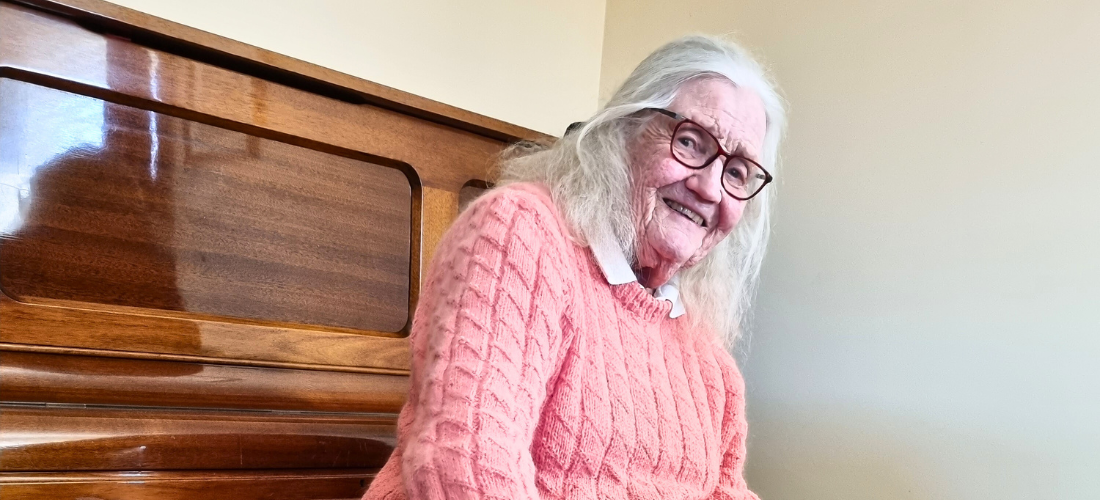Eye injections have saved the sight of thousands of Australians since they arrived down under in 2007 – including Kerrie from Hobart. That’s why Kerrie is relieved that both major political parties have committed to maintaining the Medicare rebate for this life-changing treatment.
When Kerrie noticed the picture frames on her walls appearing wiggly, she dashed from her home in Glenorchy to her optometrist in central Hobart.
That day, Kerrie was diagnosed with neovascular age-related macular degeneration (wet AMD) – one of Australia’s leading causes of blindness.
“Then they said you’ve got to have needles in your eyes – and I said, ‘Oh well, you’ve got to do what you’ve got to do’,” Kerrie recalls.
This treatment might sound intimidating, but eye injections’ arrival in Australia 15 years ago changed the outlook for the macular disease community.
Breakthrough treatment
Before these sight-saving injections became available here in 2007, most people diagnosed with wet AMD went blind – sometimes quite rapidly.
Fifteen years later, Australia is a world leader in the treatment of wet AMD. Eye injections have saved the sight of thousands of Australians like Kerrie, who’ve been able to maintain their vision and continue to enjoy full, active lives long after diagnosis.
For the past year or so, Kerrie has regularly visited her ophthalmologist for eye injections that have maintained her vision.
Was Kerrie relieved to learn that a sight-saving treatment existed when she was diagnosed?
“Oh my goodness, yes,” says Kerrie, who attends each appointment with her son Grant, niece Leah or Leah’s partner Beau for support.
“I mean, I think out of all your senses – all of them are very important, but when it comes to losing your sight, it would be just terrible. It would be just awful.”
“AMD hasn’t stopped me with anything … and I’ve got really good support from everybody.”
The cost of eye injections
However, this vital treatment carries a price tag.
Kerrie is out of pocket almost $200 per injection, which takes a serious chunk out of her pension every seven weeks.
Alarmingly, the independent Medicare Benefits Schedule Review Taskforce for Ophthalmology recommended a 69% cut to the Medicare rebate for these sight-saving eye injections.
PricewaterhouseCoopers (PwC) modelling commissioned by Macular Disease Foundation Australia (MDFA) calculated that cut would increase patients’ average out-of-pocket costs from $1900 to $3900 per year – double if you need injections in both eyes.
When asked whether cost is an issue for her, Kerrie replied: “It is, because I don’t have private health.
“I don’t know what I’d do if Medicare couldn’t cover some of it. I know I wouldn’t be able to pay out that sort of money.
“Oh look, I know if I desperately needed it, my kids would help. But it would take a lot to ask them because I don’t like that sort of thing.”
Proposed Medicare cut
While Kerrie might be able to make ends meet, 47,000 Australians wouldn’t.
PwC estimated that if the proposed cut was implemented, some 47,000 people would stop treatment over a five-year period. And when you stop receiving eye injections, you risk going blind.
However, MDFA engaged with political leaders in Canberra to campaign against the cut – and they listened.
In the build-up to the 2022 Federal Election, both major political parties rejected the recommended cut – a major win for thousands of macular disease patients who rely on this treatment to retain their sight.
“This is really good news”
Kerrie from Hobart.
“It’s expensive and I’m on a pension. We’re lucky to get some money back but I still have to dip into my savings each year to cover the costs. That’s $200 out of my savings. I don’t know how others do it.
“When I was diagnosed, I could have gone through the public sector but I never would have gotten in, so that’s why I went private. And I don’t have health insurance.
“I’m retired now and the cost comes out of my pension. I’m careful but every dollar counts.
“I don’t know what I would have done had there been an increase in the cost of treatment. I know my children would have helped me, but I don’t want to burden them.”
“Oh my goodness, this is good news.”
Posted: 18 May 2022

















